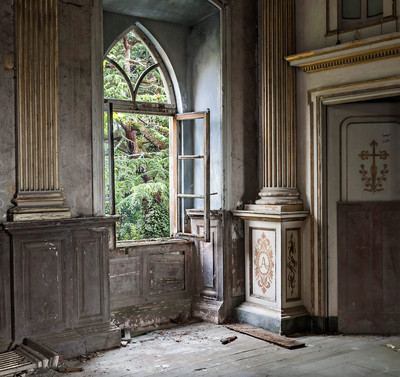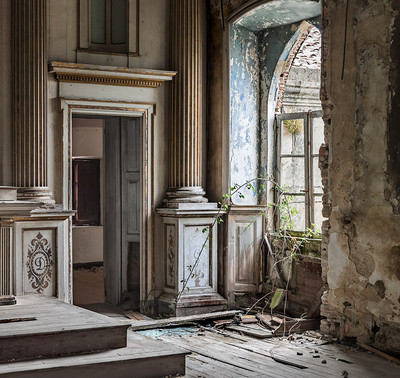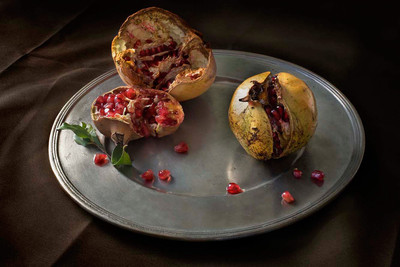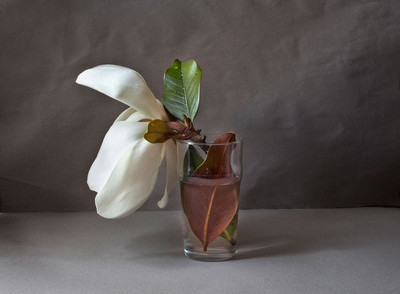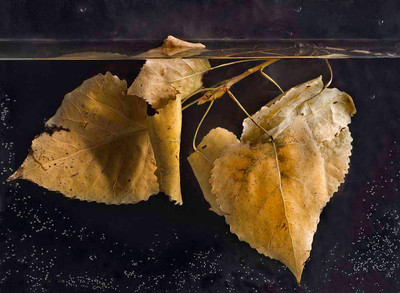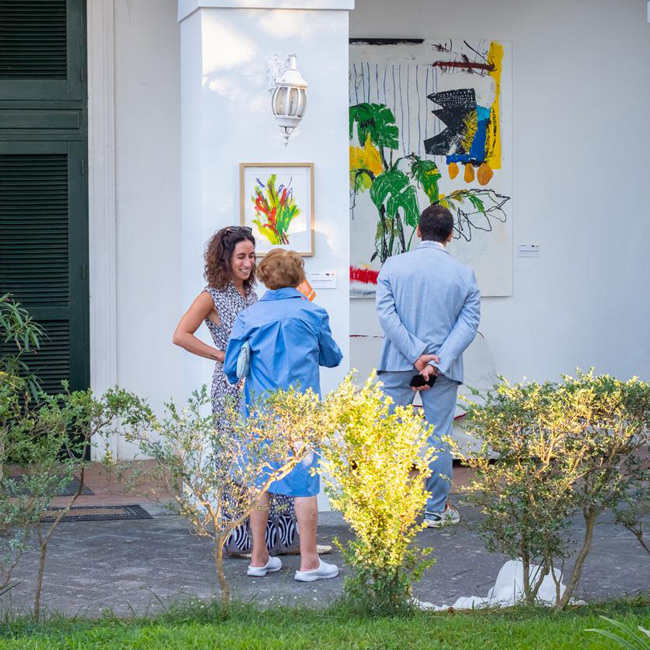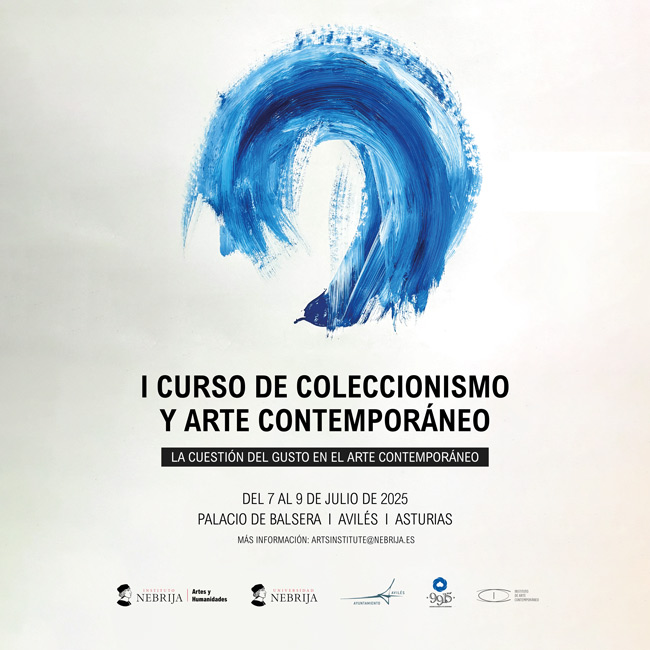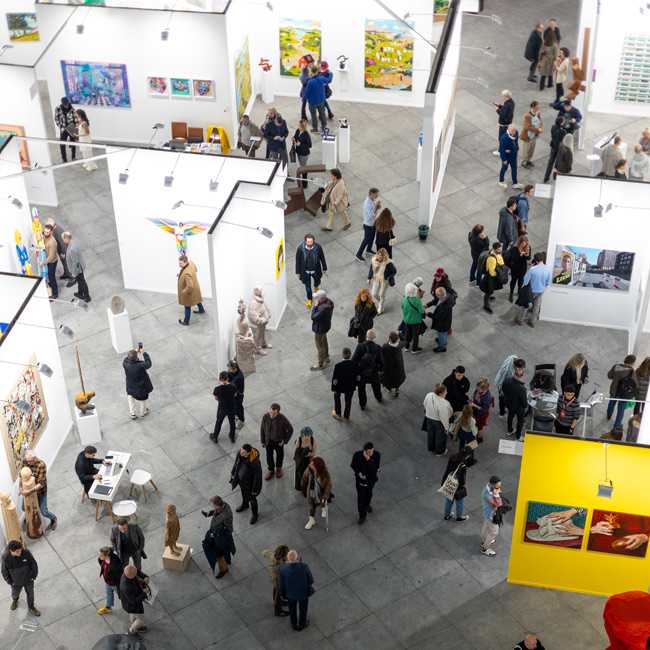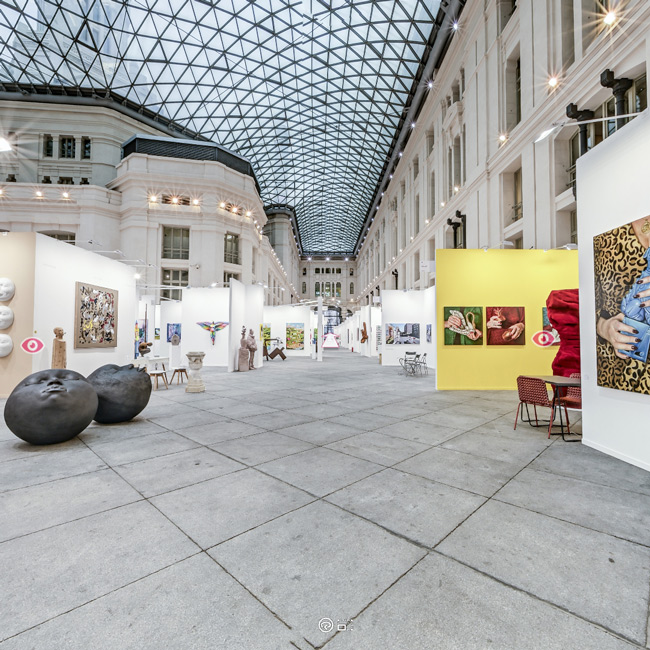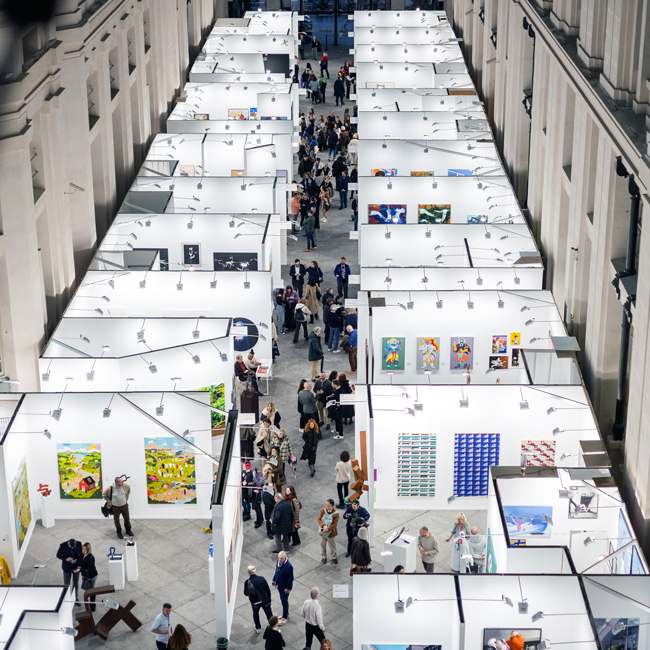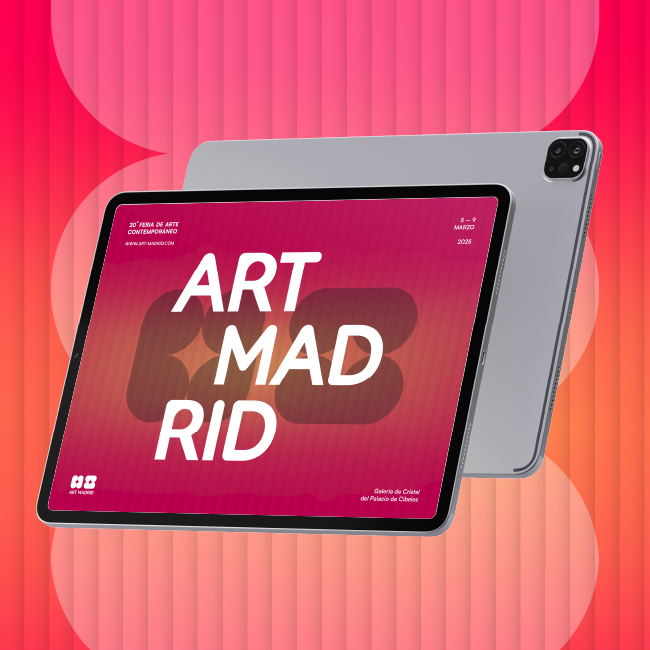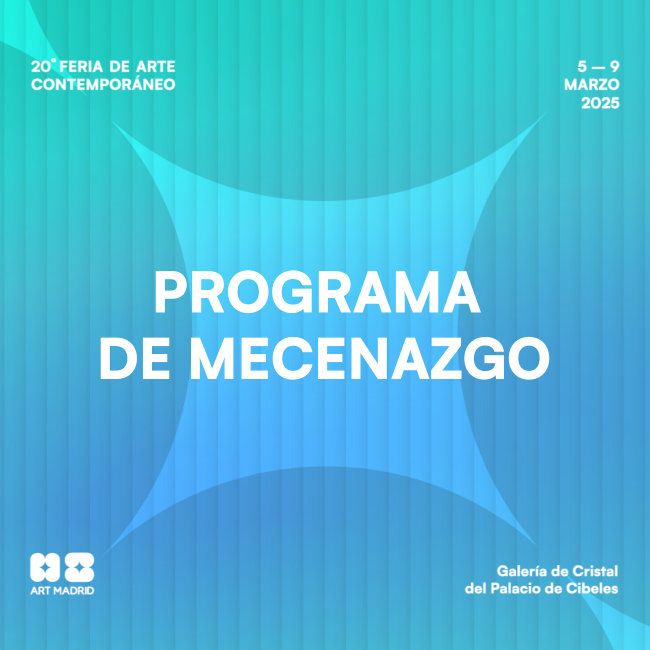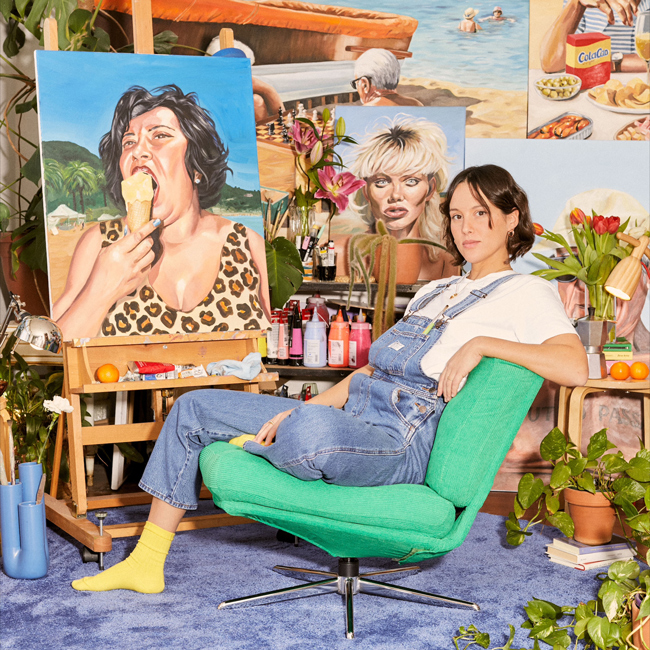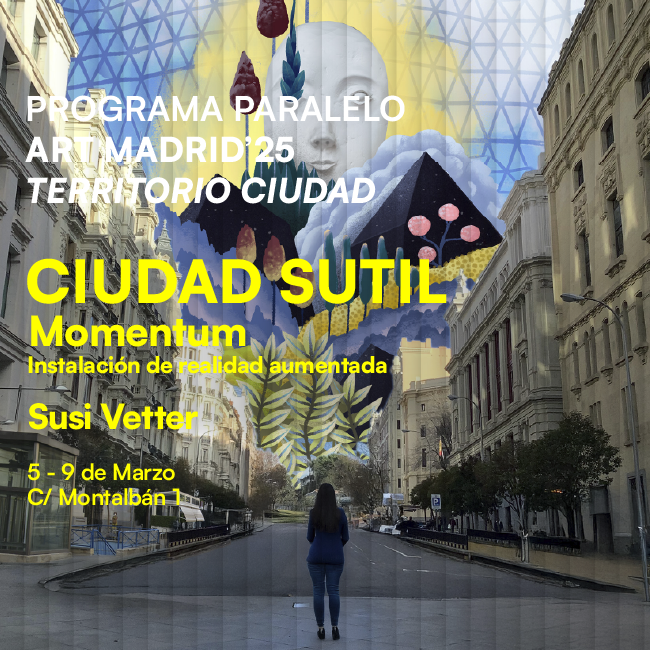A CONVERSATION WITH PILAR PEQUEÑO
Oct 10, 2018
art madrid
Pilar Pequeño’s photography invites us to know a serene part of nature that becomes majestic and suggestive to the warm light of this work. The expert look of the author, masterful in composition, works her spell by finding the ideal light atmosphere for each flower, leaf or fruit that she catches in her images. A fair balance that reminds us of classical painting, with rounded edges and soft sheen in which the simplest and humblest beauty of our immediate environment condenses.
Today we are lucky to meet this exceptional photographer in person and talk in detail about her work and the evolution of her photographic technique. Join us to meet her.
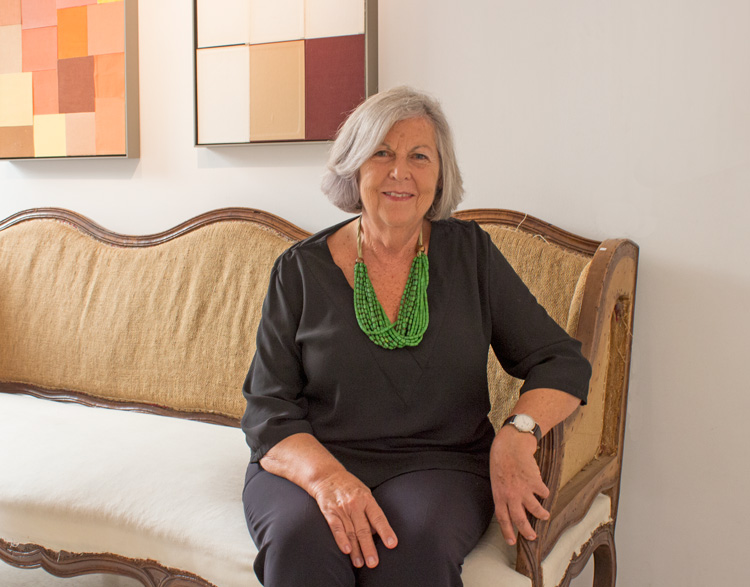
Congratulations because we know that you have just opened the exhibition in the Villanueva building of the Prado Museum, I suppose you receive this news with joy, as a professional challenge.
When they called me from the Foundation of Friends of the Prado Museum to invite me to participate in the project, logically I was very happy because it is wonderful to be in this institution. The project was about being inspired by an author or a painting related to the museum. I had already done, within the series of still lifes, some works for a commemorative exhibition of Don Quixote in 2015. When they told me to participate I thought it would be interesting to continue with the development of the still lifes and the influence of the painters in the Prado, both of still lifes and of vases, because I am very interested in transparencies, glass, light... The works I have now exhibited in the Prado are inspired by Zurbarán and Arellano.
It's a project that has taken much longer than it seems
Synthesising the beauty of Zurbarán in two paintings, what inspires his work has been hard...
This proposal is a challenge for the artist but also comes as a recognition of his career. This project is the photographic result of a whole career where the beginnings were not always in the world of photography, as far as we know.
I started drawing, and for a while, I combined photography and drawing. But then, as what interests me most is light, there is nothing like the photographic technique. Photography is like drawing with light. It's what I like most about this technique, how it transmits light. To make still lifes I use natural and window light, like the classics, but I direct it, that is, the advantage of still life is that you can create your own lighting scene. If you are going to do a landscape, you have to wait for the right light to happen and here, you just decide what you want to do. I like to do the work and get the negative as pure as possible.
The best thing for me is to search. For example, when I go out to the field, I look for wildflowers and I think "how beautiful is this stem, how will it look if I put a backlight?" or "these leaves are transparent, I will put them in the backlight" and then, when I arrive, I study the still life in the studio, or I submerge it in water, and from there, I work the light scene. In order to transmit the feeling produced by an image, you have to pay careful attention of the composition, to place lines, plans... there should be something that always forces you to take a second look. Although it seems a very simple task, this process of making the image is very thoughtful, very worked, and what most excites me is light. The whole series of still lifes revolves around transparencies. Water, which is an element that already appeared in my first landscapes of the 80s, is now in the vases, in the glasses. Sometimes I get a distance away, and the glass, the plant, the surfaces that surround it come out, what I want to extract is the effect of the light on the glass, on the water, on the plant but also on the elements which are around them. And other times what I do is to get so close to the vase, that the limits are not seen, and then it is submerged in the water, and sometimes the surface is not seen. I want to believe that my photos are suggestive, not just images in which all the meaning is revealed, in such a way that the person who comes to see those photos can interpret them according to what he/she is feeling at that moment. I think that the spectator can project on them looking for the meaning.
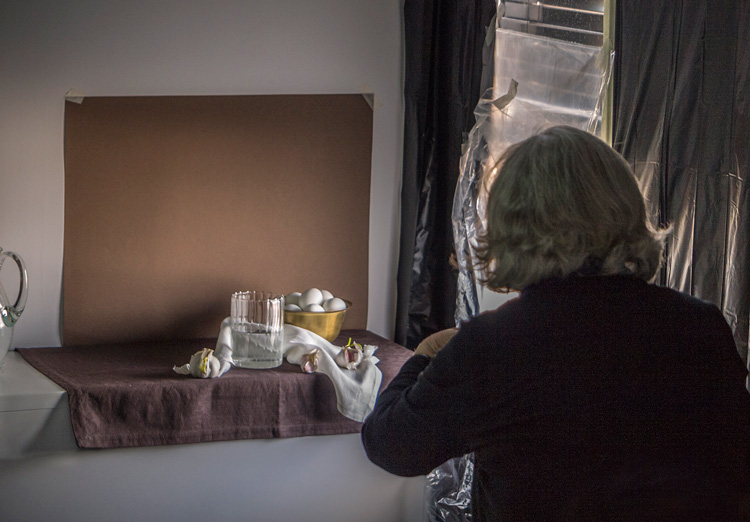
In all this laborious work where there is a pre-work approach, we also perceive a whole subject that underlies and invites us to reflect on the passage of time, on our relationship with the environment. The titles you choose for your projects are also quite suggestive in that regard
Nature is present from my first landscapes to my last book that belongs to the series Huellas (traces). Here I work on abandoned places, with what we can see through the gaps in the doors and windows. And what interested me in this series is the development of nature in places that man has abandoned. How ruin changes if it is in the north, in Galicia, or is in the Mediterranean. Light changes, the history of the building changes, the architecture... For example, the house that I have in the Mar Menor is open to the outside and from inside, through its windows, the sea looks like a canvas, the rushes, the trees... On the other hand, in the north, in Galicia, it is the tangled garden that enters the corridors. There is a very interesting concept of the anthropologist Marc Augé about time in a ruin. He says that ruin does not represent a past but multiple accumulated presents, that united by the action of nature demonstrate a different time. That's what I feel.
Is there something that you find particularly difficult in your work or something that poses a challenge for you?
I really enjoy working. The project of the Friends of the Prado Museum Foundation has been hard work because I wanted to synthesise so much what I feel that I was sometimes lost. But that work is very nice, that is, in the end, you get more or less what you wanted and you stay very satisfied. That's why I want to show all the previous work I've done because I've taken several paths. For example, there is the Flemish still life and the Spanish still life, the Prado has a fantastic collection of Flemish still life, where the colours change, the form... I have tried to do a little bit of everything; sometimes I have mixed, so I think it is also interesting to show this process.
Are you open to what the chance puts you ahead?
It's not chance, it's pure work. Right now I'm working with the cubist perspective, in which you can access at the same time from the front and from the back. For example, I have a photo that is completely submerged and what I do, is taking the picture from above the water and at the same time, I also take the front part of the vase, and then on the surface it reflects, not only the plant, but also the leaves that are in the bottom and come out like green shadows, as if it were a painting of Monet.
Is there any milestone, something that has represented a change for you?
I work because I like it, and I enjoy doing it, but if there is any recognition like the Gold Medal for the merit of the Fine Arts, it’s a good thing because there are many people who make very good photos, but this time it was my turn. It is very difficult that among so many photographers, the Foundation of Friends of the Prado Museum has called me to participate in this exhibition. Seeing your work recognised, makes you very happy. The other day, at the opening, I saw my photos hanging and a couple of steps away, in the next room, all the great masters, it’s very exciting. Then, also, when someone approaches you and tells you that a picture of you has moved him and transmits that emotion that you have felt is very beautiful.
Congratulations Pilar, thank you very much for sharing with us a part of you that sometimes is not so visible because you make yourself known through your work, but it is also important to know who is behind. We thank you very much.

